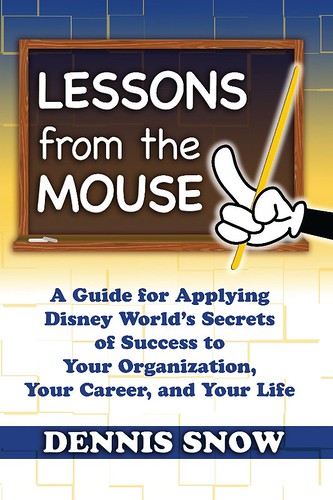Figure Out What Ticks Off Your Customers - and Do Something About it
Posted on June 30, 2008 by Dennis Snow
This is the ninth in a series of ten blog posts that provide a brief synopsis of the chapters in my upcoming book, Lessons From the Mouse - A Guide for Applying Disney World's Secrets of Success to Your Organization, Your Career, and Your Life. You can view previous posts from the book by clicking on the Lessons From the Mouse category on the left column of this page.
Lesson #9: Figure Out What Ticks Off Your Customers - and Do Something About it.
While Disney World's mission is to create magic for guests, sometimes less-than-magical events occur. Rain, closed attractions, and long wait-times are just a few examples of circumstances that can result in guests being ticked off. Guests often save for years to visit Disney World, and their expectations are understandably high. Any glitch in the experience can easily cause frustration that is out of proportion to the actual problem - but the guest's perception of the problem is the only perception that counts.
Rather than ignore those problems, however, Disney faces them head on. Over the years, for example, Disney "Imagineers" have addressed the wait-time issue in a number of ways, such as posting wait-time signs, providing entertainment while guests stand in line, and designing the queue into the story of the attraction. Most recently Disney World created FastpassTM - a process where guests can make reservations to go on major attractions, reducing wait times dramatically. These are all examples of finding out what ticks off customers and doing something about it.
Most customers have experienced company processes that just don't make sense and that cause them intense frustration. Sometimes a particular process has been in place so long that the organization simply forgets how irritating it can be to customers. Other times the organization decides that their convenience is more important than the customer's convenience, such as the appliance repair company that says they'll be at your house sometime between 1pm and 5pm. Clearly, their convenience trumps the customer's.
All it takes to successfully apply Lesson 9 is an understanding of how customers interact with your organization and to identify any "points of pain." When asked, most customers are quick to share what frustrates them. Frontline employees are another source of information regarding customer frustrations. After all, those employees are usually the ones who bear the brunt of the customer's irritation.
When a company identifies customer frustrations and takes steps to alleviate the problems, they set themselves apart from the competition. Customers think, "Why can't other companies do it like they do?"
Questions to consider about Lesson #9:
- What are some frustrating processes you've endured as a customer?
- What do customers find frustrating about doing business with your organization?
- What can your organization do to encourage greater sharing of ideas for improving the customer experience?

To be released this summer